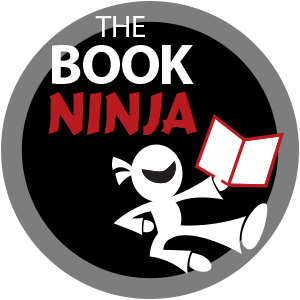You’re an author. Well, you’re probably an author if you’re reading the articles on this site. If you’re not an author and you’ve read this far, you’re probably aspiring to be one. At any rate, being an author, you already have at least one product—your book. And being a smart, savvy author, you understand the more books you write, the more you’ll naturally sell. So it’s almost a no-brainer that one of the things you should feature in the back of your e-book is your other books.
If your other books are the only other products you have right now, that’s fine. The goal is to make money with every book sale. If a reader likes what you said in your book and you advertise another book at the end of it, chances are they’ll click through to purchase your other book as well. Get enough books under your belt and you’ll start to gather a following of people who want to “collect them all.”
Besides books, you may have other products. Maybe you designed a training course. Maybe you have a template or checklist your audience would love. Products can be digital, printable, and even hardcopy.
Here are some ideas for products you can create:
- Templates—For a non-fiction e-book, if you write about anything such as writing sales copy or creating flow charts, you can turn those ideas into templates other people can then easily adapt for their own projects. Save them time and you have the makings of a great product. I did this with my non-fiction business and self-help book templates.
- POD Products—There are a few awesome print-on-demand product sites that let you create your own branded line of products. Zazzle.com and CafePress.com are two of them. You can create one image and have it printed on hundreds of items, fulfilled, and shipped directly to customers from these companies (no inventory for you). If you’re writing fiction, you can brand your entire POD product store around your book and characters. Put an advertisement in your book for readers to get their exclusive characters printed on a mug, greeting card, and even a tie!
- Mini Course—A mini course is simply a long PDF with step-by-step screenshots to do something. If you write about anything technical—any kind of a process using a computer, smartphone, or tablet—a mini course is an easy product to sell.
- Video Course—A video course is a mini course taken to the next level. By using screen capture software like Camtasia (PC) or Screenflow (Mac), you can record yourself talking and showing an actual process. Get that recording transcribed with screenshots into a mini course and bundle it with the video, and you have a nice higher-value product.
- Systems—Do you use a system of spreadsheets to track something specific? Turn it into a product! I use a system to track websites that specialize in promoting free Kindle days. I use it for each free Kindle promotion I do to keep track of where I submitted the promotion to, who responded, etc. It’s taken time to put all that info together and I’ve had many people request access to it, so I turned it into a product. You can do the same thing! Who says you have to keep giving everything you create away? Package it, sell it, and advertise it in the back of your book.
- Old Freebies—When you get to the point you’ve cycled through a lot of free opt-in products, you can revise and re-release your retired freebies into products. The work has already been done; they may just need updated. This is a quick way to make new products after you’ve been at this product creation thing for a while.
I’m a big fan of not re-inventing the wheel. If you’re just starting out as an author, you’ll need to take some time to build up your product selection. If you’ve been at it a while, or even if you’re changing focus and have a lot of older content, many times that material can be revised and repurposed into a fast product. Don’t make it harder on yourself than you have to. Take inventory of everything you have available to you, and brainstorm out on a white board or sheet of paper how you can turn what you already have into additional income streams and advertise them in the back of your book.
Note: This article is adapted from the chapter, Your Products in Kristen’s Kindle book, Author’s Quick Guide to Making Money with Your 99-Cent Kindle Book.
What product ideas have you come up with to build out your back end income? Share in the comments below!
photo credit: Robert S. Donovan via photopin cc

